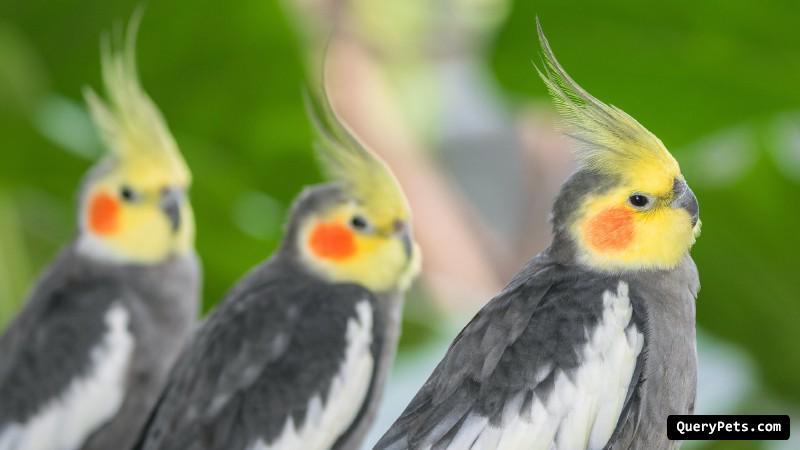How Do Birds Show Affection To Humans?

Despite their frequent interactions with humans, understanding bird behavior can often seem like trying to decode a foreign language.
This article aims to delve into one of the most fascinating aspects of avian behavior: the unique ways birds show affection to humans. Why is it essential to understand bird behavior?
By learning their language of love, not only can we form deeper connections with our feathered friends, but we can also become more responsible, aware, and empathetic bird parents or bird watchers.
How Do Birds Show Affection To Humans?
So, how do birds express their affection for humans? Much like people, birds have a variety of ways to communicate their feelings.
Affection in birds can manifest as preening, singing, playing, or sharing food. These behaviors, while they might seem inconsequential or ordinary to us, hold significant meanings in the bird world, conveying emotions such as trust, joy, and love.
Understanding Bird Behavior
Bird behavior is a fascinating field that lies at the intersection of nature and nurture. On the one hand, many bird behaviors are instinctive, coded into their DNA through generations of evolutionary selection. On the other hand, birds are highly social creatures and can learn a lot from their environment and interactions.
The environment plays an instrumental role in bird development. Different environmental stimuli can shape a bird’s behavior and its relationship with humans.
For instance, a bird exposed to positive interactions with humans at an early age is likely to develop a strong bond and show more affection to humans than a bird that has had negative experiences.
Common Bird Affection Signals
When it comes to showing affection, birds might be more similar to us than we initially thought. They express their affection through preening, singing, playing, and feeding, behaviors that might seem familiar as they echo our own ways of expressing love.
Preening
Preening is the act of grooming oneself or others with the beak. Birds preen to keep their feathers in top shape, which is essential for flight and thermoregulation. But preening goes beyond mere hygiene.
When a bird preens another, it’s a significant sign of trust and bonding. When your bird starts to preen you, it’s their way of showing affection and accepting you as part of their flock.
Singing
Birds are famous for their melodic tunes, which serve various purposes like claiming territory or attracting a mate. But did you know that birds might also sing as a sign of affection? When your pet bird sings to you, it could be expressing happiness and comfort in your presence, a sure sign of affection.
Remember, each bird species has a unique song, so pay attention to your bird’s individual notes.
Playing
Playing is another critical form of communication in the bird world. Birds play with each other, with toys, and even with their human companions.
It’s a sign of happiness and trust. If your bird engages you in a game or seems eager to play when you’re near, it’s an indicator they feel safe and comfortable around you—an expression of affection.
Feeding
Feeding is a unique behavior that signifies trust and affection in birds. In the wild, birds often share food with their mates and their young, an intimate act that signifies deep trust and caring.
If your bird offers you food or accepts food directly from your hand, it’s a significant sign of affection.
Bonding with Birds: Encouraging Affection
Building a bond with a bird takes patience and consistency. Birds are not domesticated like dogs or cats; they are closer to their wild instincts and hence need time to build trust. Show respect for their boundaries, and let the bird set the pace of your relationship.
Remember, every bird is an individual with its own personality and preferences. Some birds might enjoy being petted, while others might prefer to interact from a distance.
Observing and respecting these individual differences can help foster a loving, affectionate bond with your bird.
Misinterpretations of Bird Behavior
As we try to understand birds, there’s a risk of anthropomorphism—attributing human characteristics to non-human entities. While it’s a common and often innocent mistake, it can lead to misinterpretations of bird behavior.
For example, a bird bobbing its head might seem like it’s dancing to music, but in reality, it could be a mating display or a sign of stress. Similarly, a bird nibbling or nipping at you might seem affectionate, but it could be a sign of irritation or an attempt to establish dominance.
The best way to avoid such misinterpretations is by learning as much as possible about bird behavior, both generally and specifically for the species of bird you are interacting with.
Conclusion
In conclusion, birds show their affection for humans in a variety of ways, including by preening, singing, playing, and feeding. Recognizing and appreciating these signals can help us form stronger bonds with our feathered friends. Understanding bird behavior allows us to be more sensitive to their needs and avoid misinterpretations that could harm our relationship with them.
The relationship between humans and birds is a testament to the rich emotional lives of these fascinating creatures. As we continue to learn about them, we realize that they are not so different from us.
They feel and express joy, fear, and yes, even love, much like us. And in return, they ask for understanding, patience, and respect. So the next time a bird sings to you, plays with you, preens you, or shares food with you, remember that you’ve just been shown a little piece of bird affection. Treasure it.
